Hipertensión durante el embarazo, mayor riesgo de sufrir sudoración nocturna
 Las mujeres que padecen de hipertensión arterial durante la gestación tienen mayor riesgo de sufrir sofocos y sudoración nocturna en la según un artículo publicado en Menopause.
Las mujeres que padecen de hipertensión arterial durante la gestación tienen mayor riesgo de sufrir sofocos y sudoración nocturna en la según un artículo publicado en Menopause.
Los expertos investigaron la relación entre las enfermedades hipertensivas durante el embarazo como la preeclampsia y los síntomas vasomotores en 853 mujeres que visitaron al cardiólogo en Kampen, Países Bajos.
De estas, 274 mujeres sufrieron enfermedades hipertensivas durante el embarazo y experimentaron sofocos más intensos y sudoración nocturna.
Debido a que la mitad de las mujeres del estudio sufrieron síntomas cardiacos, los investigadores no tienen claro si esta asociación se puede ligar a las mujeres de mediana edad.
(Fuente: Diario Médico, referido por Aldía) [Actualizado: 02 de mayo 2013]
Los trabajos y opiniones que aquí se exponen son orientadores de lo que se publica en Cuba y en el mundo sobre aspectos relevantes de la hipertensión arterial.
 Prevalence, risk factors and awareness of hypertension in India: a systematic review
Prevalence, risk factors and awareness of hypertension in India: a systematic review
Por: P Devi, M Rao, A Sigamani, A Faruqui, M Jose, R Gupta, P Kerkar, R K Jain, R Joshi, N Chidambaram, D S Rao, S Thanikachalam, S S Iyengar, K Verghese, V Mohan, P Pais2 y D Xavier. Journal of Human Hypertension (2013) 27, 281–287.
Indians have high rates of cardiovascular disease. Hypertension (HTN) is an important modifiable risk factor. There are no comprehensive reviews or a nationally representative study of the burden, treatments and outcomes of HTN in India. A systematic review was conducted to study the trends in prevalence, risk factors and awareness of HTN in India. We searched MEDLINE from January 1969 to July 2011 using prespecified medical subject heading (MeSH) terms. Of 3372 studies, 206 were included for data extraction and 174 were observational studies. Prevalence was reported in 48 studies with sample size varying from 206 to 167 331.
[Actualizado: 02 de mayo 2013]
Esta sección mostrará algunos trabajos que puedan ser útiles a nuestros facultativos por su interés práctico o teórico.
The morning blood pressure surge is related to serum cholesterol
 Por: C A Martin, J D Cameron, G A Head, S S Chen, N Eikelis y B P McGrath. Journal of Human Hypertension (2013) 27, 315–320.
Por: C A Martin, J D Cameron, G A Head, S S Chen, N Eikelis y B P McGrath. Journal of Human Hypertension (2013) 27, 315–320.
A morning blood pressure surge (MBPS) may be either a mechanism for, or a marker of, increased cardiovascular events. This study has examined factors which may influence the morning surge: age, gender, metabolic factors, sympathetic function, blood pressure and arterial stiffness. Four measures of the MBPS were examined—sleep-trough surge, pre-awake surge, rate of blood pressure rise and a Power function. Subjects underwent ambulatory blood pressure monitoring, glucose tolerance test, central pulse wave velocity, sympathetic autonomic function tests (mental stress and sustained handgrip). MBPS was associated with age, hypertension, blood pressure variability and serum lipids. [Actualizado: 02 de mayo 2013].
Esta sección expone trabajos actuales, de carácter investigativo sobre la hipertensión arterial.
 Por: Pedro Ordúñez, Jay S Kaufman, Mikhail Benet, Alain Morejon, Luis C Silva, David A Shoham y Richard S Cooper. BMC Public Health 2013, 13:169.
Por: Pedro Ordúñez, Jay S Kaufman, Mikhail Benet, Alain Morejon, Luis C Silva, David A Shoham y Richard S Cooper. BMC Public Health 2013, 13:169.
The excess burden of hypertension among blacks has been a prominent feature of the heath disparities literature, and many scientists presume it to be a stable and inevitable phenomenon. The underlying causes of this disparity can only be disentangled in a setting in which the population does not experience racial stratification of socioeconomic opportunities. While such conditions of racial equality remain uncommon, they may be approximated in Cuba, a country with a persistent policy of social inclusion over the last 5 decades.
Overall, skin color was unrelated to mean blood pressure or hypertensive status in this population, although among women specifically some racial advantage appears evident in adjusted prevalence and control, and should be investigated further. The overall null result suggests that Cuba may exemplify the social conditions in which racial excess in hypertension, characteristic of much of the western world, is not a necessary reality. [Actualizado: 02 de mayo 2013]
 Por: Charumathi Sabanayagam, Boon Wee Teo, E Shyong Tai, Tazeen H Jafar y Tien Yin Wong. BMC Nephrology 2013, 14:86.
Por: Charumathi Sabanayagam, Boon Wee Teo, E Shyong Tai, Tazeen H Jafar y Tien Yin Wong. BMC Nephrology 2013, 14:86.
Chronic kidney disease (CKD) is an emerging public health problem worldwide. Previous studies have shown an association between blood pressure (BP) and CKD. However, it is not clear if there are ethnic differences in this association. We examined the association between BP and CKD in a multi-ethnic Asian population in Singapore.
The prevalence of both hypertension and CKD was higher among Malays (68.6, 21%) compared to Chinese (57.9, 5.9%) and Indians (56.0, 7.4%), but treatment for hypertension was lower among Malays (53.4%) compared to Chinese (89.8%) and Indians (83.1%). Hypertension was associated with CKD in all three ethnic groups (OR [95% CI] = 2.71 [1.59-4.63], 2.08 [1.62-2.68], 2.43 [1.66-3.57] in Chinese, Malays and Indians). Among the BP components, both systolic and diastolic BP were associated with CKD in Malays whereas, systolic BP was not significantly associated with CKD, and diastolic BP showed an inverse association which was explained by anti-hypertensive medication use in Chinese and Indians. [Actuaizado: 02 de mayo 2013]

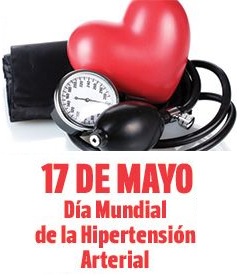
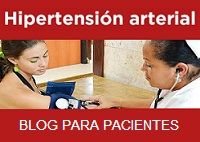


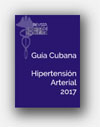
![Glosario: hipertensión [Hipertensión arterial en la atención primaria de salud. 2009]](http://temas.sld.cu/hipertension/files/2016/04/Glosario-e1541006177950.jpg)
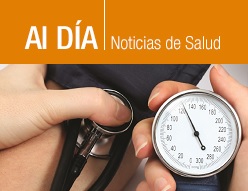
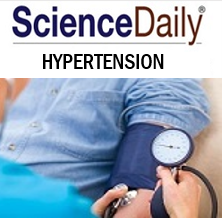

Comentarios recientes